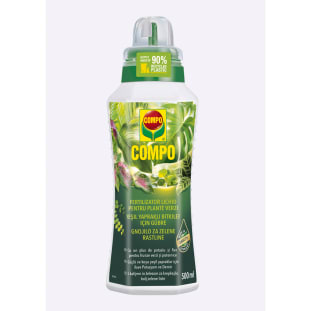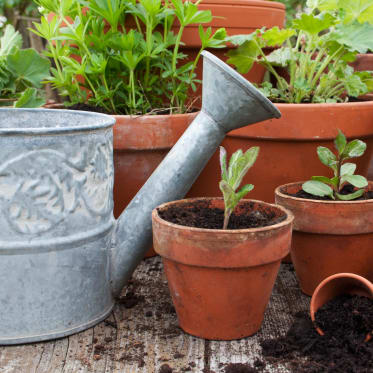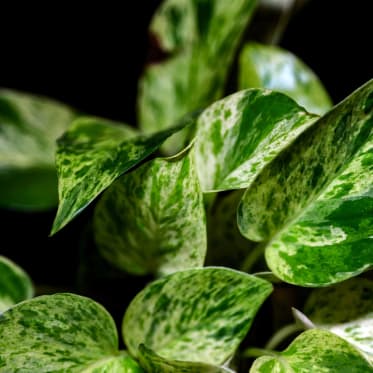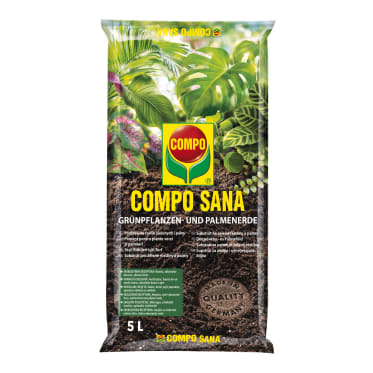Frequent search terms
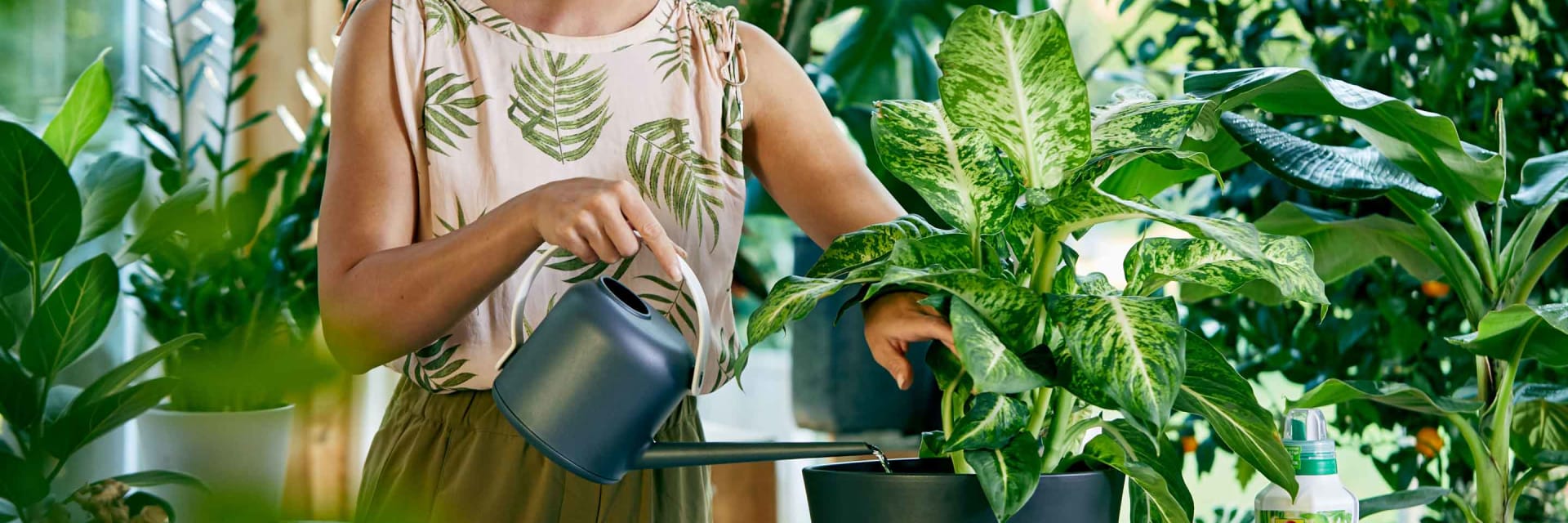
- COMPO
- Guide
- Plant Care
- Indoor plants
- Non-flowering plant stress factors
Non-flowering plant stress factors
Houseplants can face a lot of stress in the winter, in particular. Leaves that are deep green and strong can quickly turn into drooping pale yellow ones. If you keep a close eye on your plants and know the typical symptoms, you can help them quickly or even prevent things from getting that far. The most common challenges your houseplants will face – and how to overcome them – can be found here.
Non-flowering plant stress symptoms at a glance
| Symptom | This may be the cause | This may help |
|---|---|---|
Stunted growth, pale leaves | Nitrogen deficiency, pests | Fertilise, check plant for pests and if necessary, eliminate |
Very small leaves | Nutrient or light deficiency | Fertilise, choose brighter location |
Brown or dry leaf tips | Dry air combined with heat or lack of water | Spray plant with water, change location |
Yellow leaves | Iron deficiency, too much or little water, lack of light | Repot, water with decalcified water, location with more light |
Falling leaves | Draught, waterlogging | Change location, water less |
Fast-growing, high shoots | Lack of light | Choose location with more light |
Limp leaves, rotting roots | Root rot (disease), waterlogging | Remove rotten roots and repot plant, water less |
Sticky film on the leaves | Pests | Check plant for pests and if necessary, eliminate |

A lot doesn't always help a lot
1. Waterlogging
Waterlogging is a very common problem among houseplants. We can often be a little too well-intentioned with our plants, especially in the winter. That's why it's advisable to always stick your finger a few centimetres into the soil before watering. The deeper soil may still be moist even if the surface is already dry. If you give the plant too much water over a long period of time, there's a risk that roots will die, which is why less is usually more.
But the opposite may also be the case, especially in the winter. If the plant is put too close to a warm heater, then the water will evaporate very quickly and the soil will dry out, meaning these plants should be watered more frequently.
Learn more about watering plants properly here.

The right amount is key
2. Nutrient deficiency
Nutrients are necessary for healthy plant growth and strengthen a plant's ability to ward off pests and disease. Nitrogen, phosphorus, potassium and iron are particularly important. Sufficient and regular fertilisation can supply plants with these essential nutrients. Most houseplants should be fertilised every one to two weeks during the growing phase from March to October and once a month during the winter.
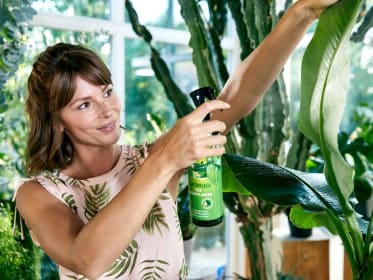
When you're spoilt for choice
3. Location
The right location is essential for the healthy growth of your houseplants. In particular, the interaction of light, air and temperature is a key factor in this regard. That's why you should have a location in mind when you buy a plant, meaning it's a good idea to find a suitable location for the plant in question before making the purchase.
Leaves with brown tips or black spots are indicative of a location that is too warm or too dry and leaves with tips that have turned yellow of one that is too cold. A location that is too cold or a draught often causes leaves to fall off of a plant. If your plants quickly produce shoots that are high and rather weak, then it's too dark for them. Its quick growth means the plant is trying to harness alternative light sources because it doesn't have enough light for photosynthesis.
A typical problem during the winter is dry heated air. The leaves of a plant dry out quickly and dust deposits form. The plant captures less light and therefore its photosynthesis reduces. Consequently, you should wipe plants that have large leaves with a soft damp cloth regularly. Plants with small leaves can be rinsed off every four to six weeks. Begin by placing the root ball in a plastic bag so that the soil doesn't get saturated, as the plant doesn't need much water during the winter, and then clean the leaves.
The small uninvited guests
4. Pests and diseases
Many pests and diseases are only identified when it's too late. This is because most pests are so tiny that they're not noticed to begin with. Pests have an easy time especially during the winter when plants are already weakened due to dry warm heated air and reduced light. That's why it's advisable to keep a close eye on your plants during this period. Act quickly at the first sign of discolouration, curled leaves, fine threads between or a sticky film on the leaves. It's advisable to move the affected plant away from the others to prevent further spread.
The most common pests and diseases affecting non-flowering plants:
| Pest or disease | What happens to your plants | How you can tell |
|---|---|---|
Powdery mildew | Powdery mildew is a fungal disease in which the fungus deprives a plant of nutrients. | A whitish floury coating forms on the shoot tips and on the top of the plant's leaves. The leaves curl, discolour and fall off. |
Mealybugs | Aphids suck nutrients from the leaves and excrete honeydew, which makes the leaves sticky. The leaves also turn yellow, curl and then fall off. | The leaves have a sticky coating and woolly or cotton wool-like knots on the bottom, veins or base. |
Whiteflies | Similar to mealybugs, whitefly larvae suck the sap from the plant and excrete honeydew. | Yellowish speckles and a sticky leaf coating form. Small larvae are visible on the underside of the leaves. |
Spider mites | Spider mites form fine webs on the leaf axils, the bottom of the leaves, and subsequently over the entire leaves. Their sucking activity extracts nutrients from the plant. | The leaves are whitish-yellow with speckles and after some time they turn pale. |
Scale insects | Scale insects also suck nutrients from the leaves of a plant and form honeydew, which covers leaves like a layer of wax. | A sticky coating forms on the leaves and grey or brown scales on their veins. |
Aphids | The spots caused by sucking aphids become visible in the form of speckles and lead to curled leaves and in the worst case to the death of an entire plant. | Aphids are much larger than other pests and easy to detect with the naked eye. |
Fungus gnats | Fungus gnats feed on the roots of a plant, especially in damp soil, and cause seedlings and cuttings to wither quickly. | Fungus gnats can be seen with the naked eye. They are usually disturbed when a plant is watered and thus become visible. |

A move can be stressful
5. Repotting
Repotting is essential for healthy plant growth. Consequently, houseplants should be planted in a larger container every two to three years in early spring (a period of four to five years is recommended for larger plants). However, the effects of repotting should not be underestimated. To begin with, the move is a shock for the plant. It's torn from its familiar surroundings, loses roots and has to become accustomed to the fresh loose soil. That's why it's not unusual for the plant's leaves to droop or even fall off shortly after repotting. But there's no need to worry because in the long run the plant will feel comfortable in its new environment and thank you with even larger leaves and strong growth.
More information on caring for your non-flowering plants
Our products for your non-flowering plants

